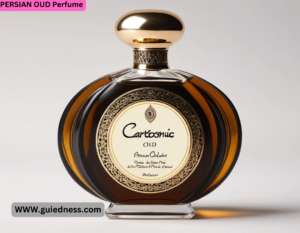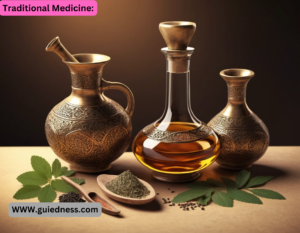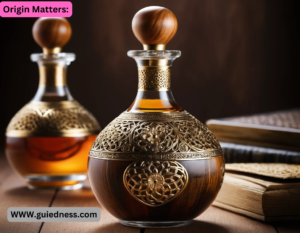PERSIAN OUD Perfume is a luxurious and exotic fragrance that captures the essence of the Middle Eastern tradition of oud, a highly prized and rare ingredient in perfumery. Oud, also known as agarwood, is derived from the resinous heartwood of the AQUILARIA tree, which develops its distinctive aroma when infected with a specific type of mold. This rich, woody, and slightly sweet scent has been cherished for centuries in Persian and Middle Eastern cultures.
Key Characteristics of Persian Oud Perfume:
Scent Profile:
- Top Notes: Often features spicy or citrusy elements like saffron, bergamot, or cardamom.
- Middle Notes: The heart of the fragrance is dominated by the deep, smoky, and woody aroma of oud, sometimes complemented by rose, amber, or sandalwood.
- Base Notes: Long-lasting and sensual, with hints of musk, patchouli, or vanilla.
- Longevity: Persian Oud perfumes are known for their exceptional staying power, often lasting for hours or even days on the skin.
- Uniqueness: Oud-based fragrances are often considered niche and luxurious, appealing to those who appreciate complex, bold, and OPULENTSCENTS.
- Cultural Significance: Oud has deep roots in Persian and Middle Eastern culture, symbolizing wealth, spirituality, and tradition. It is often used in ceremonies, religious rituals, and as a personal signature scent.
Popular Persian Oud Perfume Brands:
- AMOUAGE: Known for its opulent and intricate oud-based fragrances.
- MIZENISR: Offers refined oud perfumes with a modern twist.
- Ajmal: A Middle Eastern brand specializing in oud-centric fragrances.
- RASARI: Offers a wide range of oud perfumes, from traditional to contemporary.
How to Wear Persian Oud Perfume:
- Occasions: Best suited for evening wear, formal events, or special occasions due to its intense and luxurious nature.
- Application: Apply sparingly, as oud perfumes are highly concentrated and potent. A little goes a long way.
- Pairing: Oud pairs well with other warm, spicy, or woody fragrances, but it can also stand alone as a statement scent.
Spiritual Connection:
- Its smoky, incense-like aroma is believed to purify spaces and elevate spiritual experiences.
- In Sufism, oud is often burned during dhikr (remembrance of God) to create a meditative atmosphere.
Symbol of Status:
- In ancient Persia, oud was a luxury reserved for royalty and the elite.
- Even today, gifting oud perfume or oil is considered a sign of respect and generosity.
Traditional Medicine:
Oud was used in Persian medicine for its supposed healing properties. It was believed to calm the mind, relieve stress, and even act as an aphrodisiac.
Art and Literature:
Oud has inspired countless poets and artists in Persian culture. Its rich, evocative scent is often compared to the beauty of love, nature, and the divine.
The Science Behind Oud’s Scent
Oud’s unique aroma comes from the complex chemical compounds formed during the resinous transformation of the AQUILARIA tree. Here’s a breakdown:
Key Aromatic Compounds:
- AGARCSPRIOL Provides a woody, earthy scent.
- DIHYDROAGROFURAN: Adds a sweet, balsamic note.
- JINKOHEREMOL: Contributes to the smoky, leathery undertones.
Why Oud Smells Different on Everyone:
- Oud is a skin scent, meaning it interacts with your body chemistry. Factors like pH levels, skin type, and even diet can alter how it smells on you.
- The scent evolves over time, starting smoky and intense, then softening into a warm, woody sweetness.
Authentic Oud vs. Synthetic Oud
Due to its rarity and high cost, many perfumers use synthetic oud to replicate its scent. Here’s how to tell the difference:
Authentic Oud:
- Scent: Deep, complex, and multi-layered. It has a natural smokiness and ANIMALIC edge.
- Price: Extremely expensive. A small bottle of pure oud oil can cost thousands of dollars.
- Texture: Oud oil is thick and viscous, often dark brown or black in color.
Synthetic Oud:
- Scent: Smoother and more one-dimensional. It lacks the natural depth and complexity of real oud.
- Price: Much more affordable. Synthetic oud is used in many mainstream perfumes.
- Texture: Usually lighter and less oily than authentic oud.
How to Layer Oud Perfumes
- Layering oud perfumes can create a unique, personalized scent. Here’s how to do it:
Start with a Base:
- Use an oud-scented body oil or lotion as a base. This helps the fragrance last longer and adds depth.
Add the Perfume:
- Apply your chosen oud perfume on top of the base.
- Pair oud with complementary fragrances like rose, amber, or sandalwood. For example:
- Oud + Rose: A classic, romantic combination.
- Oud + Vanilla: Adds a sweet, creamy touch.
- Oud + Citrus: Brightens the scent for daytime wear.
Lesser-Known Facts About Oud
- The Tree Must Be Infected:
- Oud is only produced when the AQUILRIA tree is infected by a specific type of mold. This process can take decades, making natural oud incredibly rare.
Sustainability Concerns:
- Overharvesting of AQULIANA trees has led to their endangerment. Many brands now use sustainable oud or synthetic alternatives to protect the species.
Oud in Modern Pop Culture:
- Oud has become a trendy ingredient in Western perfumery, with brands like Tom Ford, Jo Malone, and Yves Saint Laurent creating their own interpretations.
Oud in Food and Drink:
- In some Middle Eastern cultures, oud is used to flavor desserts and beverages, adding a unique, aromatic twist.
How to Store Oud Perfume
- To preserve the quality of your oud perfume:
- Avoid Humidity: Keep the bottle tightly sealed to prevent moisture from altering the scent.
- Use it Regularly: Oud perfumes can last for years, but their scent may change over time. Use them within 2-3 years for the best experience.
Oud Perfume for Men vs. Women
- While oud is a unisex ingredient, it’s often blended differently for men and women:
For Men:
- Oud is combined with spicy, leathery, or smoky notes for a bold, masculine scent.
- Examples: Dior Oud ISPAHAN, Creed Royal Oud.
For Women:
- Oud is paired with floral, sweet, or creamy notes for a softer, more feminine fragrance.
- Examples: YSL M7 Oud ABSOLU, Jo Malone Velvet Rose & Oud.
How to Identify High-Quality Oud
Not all oud is created equal. Here’s how to spot the best quality oud in perfumes and oils:
Origin Matters:
- The finest oud comes from Southeast Asia (Cambodia, Vietnam, Laos) and the Middle East (India, Bangladesh, Saudi Arabia). Each region produces oud with unique characteristics:
- Cambodian Oud: Sweet, fruity, and slightly floral.
- Indian Oud: Smoky, leathery, and intense.
- Thai Oud: Earthy and medicinal.
Color and Viscosity:
- High-quality oud oil is dark brown or black and has a thick, syrupy consistency.
- If the oil is too light or watery, it may be diluted or synthetic.
Scent Complexity:
- Authentic oud has a multi-layered aroma that evolves over time. It should smell smoky, woody, and slightly sweet, with hints of leather, spice, or fruit.
- Synthetic oud often smells flat and one-dimensional.



